The Vatican Museum has many significant Roman statues, but its focus is the frescoes, not the statues. The halls of the Vatican Museums all lead to the Sistine Chapel, which contains Michelangelo’s depiction of creation through judgment. The statues in the Vatican Museum tell the story of Roman and Greek figures who outlined Roman life at the time of Christ and stand in contrast to the ornate halls and frescoes.
Photoblog, Rome, Italy, Europe. April 3, 2025
What are we doing in Europe? Here is the story. Touring Europe might be a crazy idea.
Roman Statues in the Vatican Museum
The first photo at the top depicts Mithras sacrificing the sacred bull, which was associated with an early Roman religion. Mithraism, sometimes called Mithra Mysteria, focused on the god Mithras. However, it was inspired by a religion in Iran called Zoroastrianism. The Roman Mithras was linked to new and distinctive imagery and the degree of continuity between Persian and Greco-Roman practice. The statue of Mithras sacrificing the sacred bull is depicted in multiple art pieces from the earliest centuries.
This statue is inside the animal statue room at the Vatican Museum.
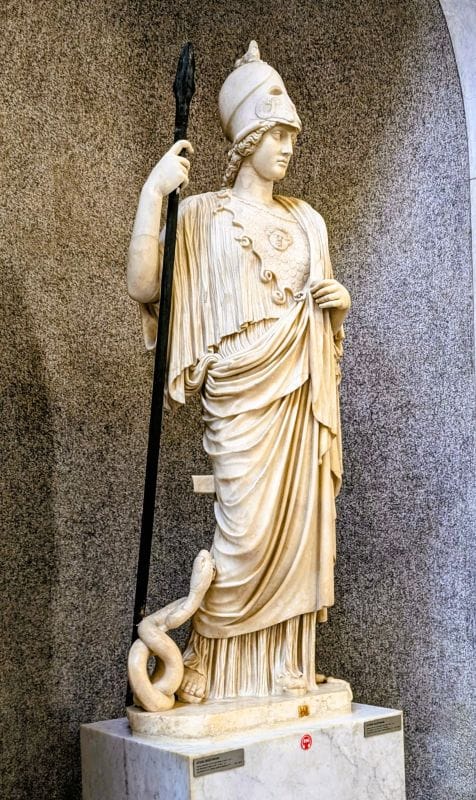
This Roman marble statue of Athena is based on a Greek bronze sculpture from the late 5th to early 4th century B.C. The statue was first attested in the 17th century in the collection of the Italian banker and art collector. It was (re)discovered in Rome, but early sources offer two opinions about its find spot.
The Romans seemed to have a genuine love of all things Greek, especially Athena.
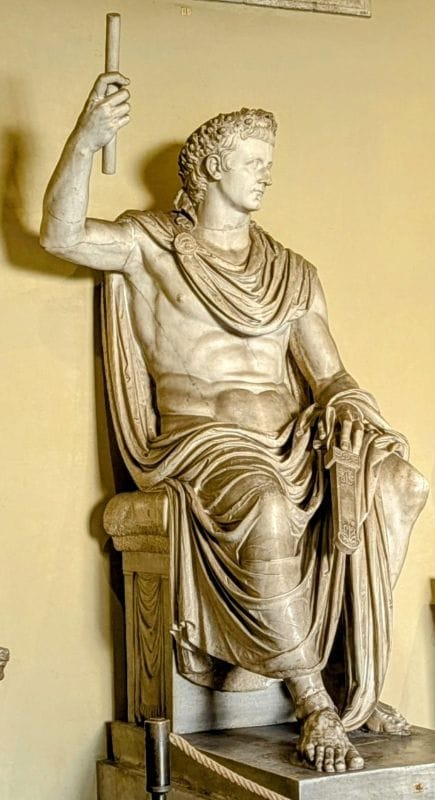
Tiberius Julius Caesar Augustus was Roman emperor from AD 14 until 37. He succeeded his stepfather Augustus, the first Roman emperor.
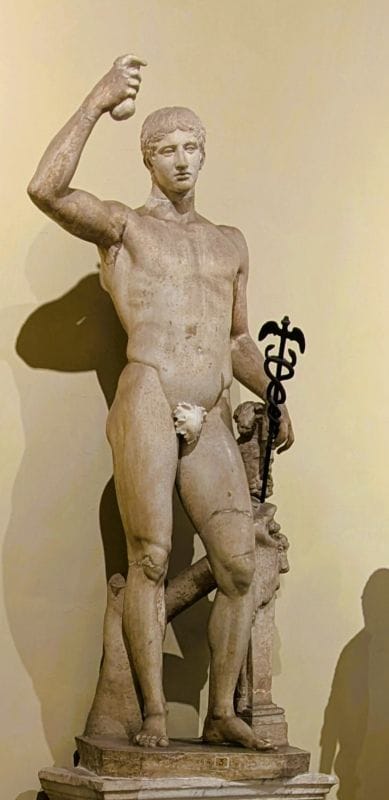
This statue is a Roman copy of a Greek bronze sculpture from the 4th century B.C. It is made of coarse-grained white marble and is displayed in the Pio-Clementine Museum inside the Vatican Museum.
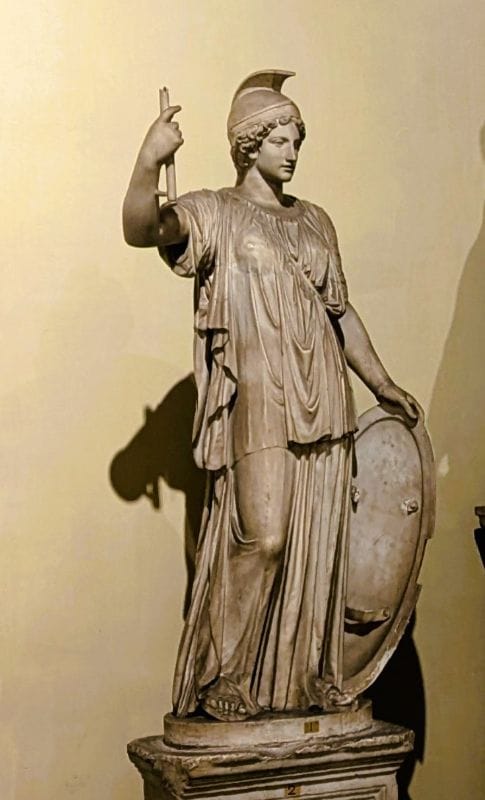
Athena, also known as the Athena Giustiniani or Minerva Giustiniani. This statue is a copy of a Greek bronze sculpture dating back to the late 5th-early 4th century B.C.
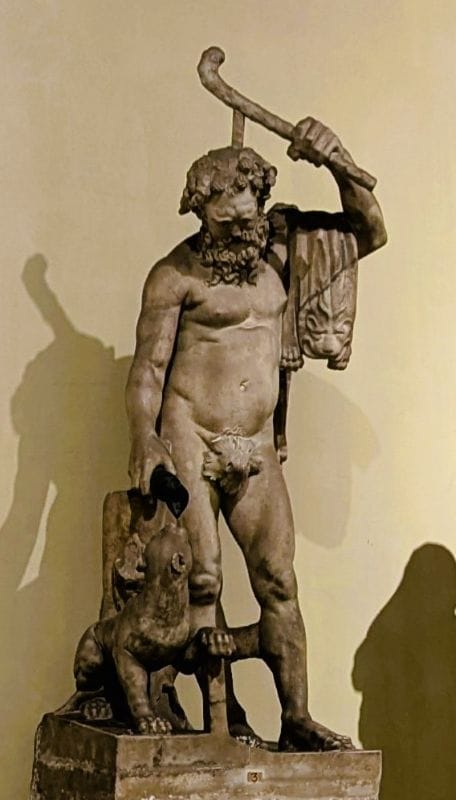
Bacchus is the Roman god of wine and the grape harvest. He is the Roman counterpart to the Greek god Dionysus.
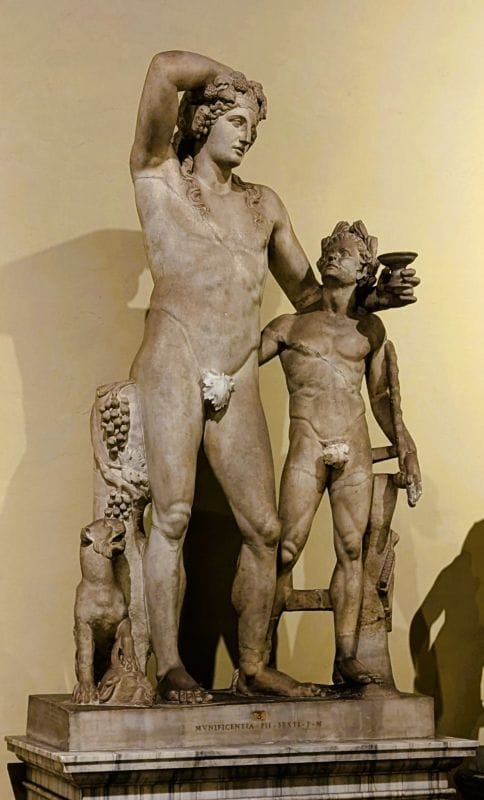
Originally, the Greeks portrayed satyrs as half-goat satyrs (also known as fauns). Saytrs became increasingly human as time went on, gaining human legs around the 6th century B.C. On this statue, the only hint of his animal origins is two skin tags on his neck, and he’s wearing a goat skin complete with a hoof.
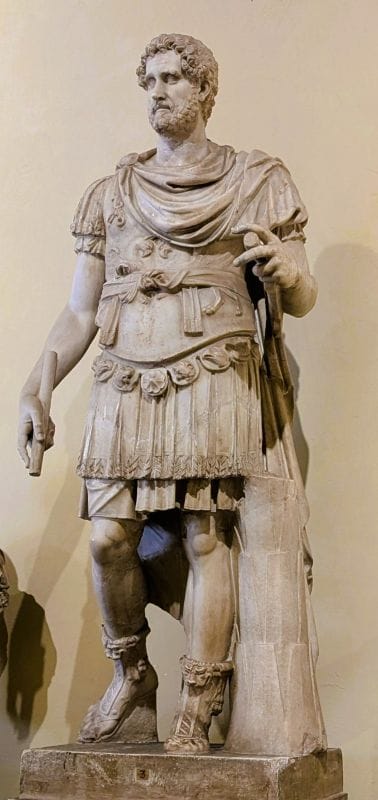
Antoninus Pius followed the Emperor Hadrian, and during this era, the Roman Empire covered most of Europe, including England. The only parts of Europe and North Africa that were not part of the Roman Empire were the Germanic areas and areas to the east of Germany.
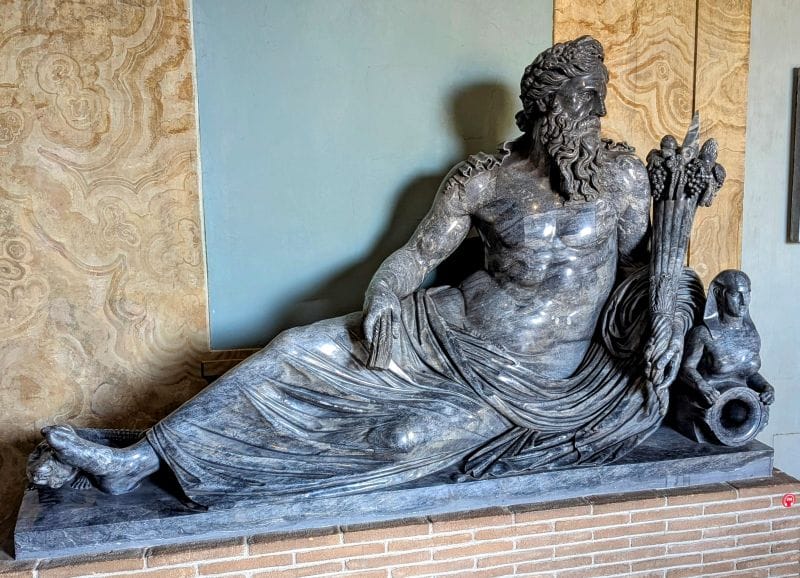
Romans had the habit of adopting and Romanizing gods from many cultures. This statue is associated with the Egyptian God of the Nile River. These gods are usually pictured with baskets of fruit. In this statue, you know it is of the God of the Nile because of the Pharaoh statue to the right of the statue.
The focus is on the frescos.
I mentioned above that the focus of the Vatican Museum is the frescoes. The passageways all led to the Sistine Chapel. After seeing the ornate hallways and frescos along the way, we walked into the Sistine Chapel to find it full and in the middle of a mass. The altar was positioned at the Michelangelo judgment end of the room, and we walked almost next to the priest as he was conducting mass. Then we scooted down the side of the worshipers and at about the middle of the hall, just before a partition, we realized we were in the Sistine Chapel.
No photos in the Sistine Chapel
I assume this rule is meant to keep people moving. While the frescoes are wonderful and recently cleaned, the frescoes in the Sistine Chapel didn’t have the wow factor that the corridors leading to the Sistine Chapel had.
Please subscribe and join us on our journey.
We will add you to our email list and send you updates once a week. Here is a link. Subscribe
About our links
As you know, our blog income is zero, which allows us to be independent and tell the truth. We do not get income or commissions. No, we don’t make paid endorsements. We don’t make recommendations; instead, we will tell you what we like (or dislike). The links are only provided as a quick reference to help our readers.
Links
About our photos
These photos were taken during our visit. Our photos are often “enhanced” to represent what we saw in person and correct for lighting and other things. Sometimes, this editing makes the images look better than what we saw in person.
About comments
We love seeing your comments, but they are not automatic. I get about twenty spam comments every day, and thus, I have to turn off automatic comments. I read and then personally publish every comment to protect the blog and keep it on the subject and real. You will not see your comment right after you hit submit. Sorry for the delay in publishing your comments. Some comments come from personal emails and Facebook. Please know that we would love to hear from you.


Great photos.